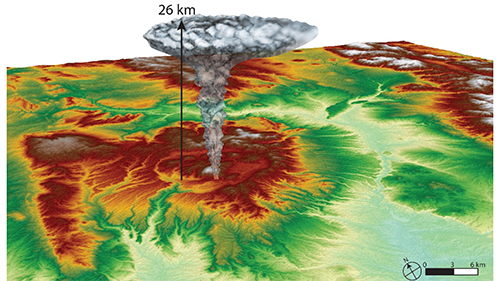Post-caldera eruptions at the Valles Caldera, New Mexico (USA)

SEMINARIO:
Speaker: Amanda Clarke
Affiliation: Arizona State University (School of Earth and Space Exploration)
Date: 13th December 2023
Time: 11:00 AM
Hosted by: INGV Sezione di Pisa
Abstract
Many calderas remain restless after large-volume eruptions, and Valles caldera is a classic example of a restless, resurgent caldera. The Valles caldera is ~20 km in diameter and is located at the intersection of two crustal anomalies, the Rio Grande rift and Jemez lineament in the Jemez Mountains volcanic field (JMVF), NM, USA. The Valles produced two caldera-forming eruptions 1.6 and 1.2 m.y., each roughly 300-400 km3 in volume (Dense Rock Equivalent; DRE). Since then the Valles has produced a long series of smaller eruptions consisting of effusive lava dome eruptions and pyroclastic events. The most recent eruption was approximately 50-75 ka, consisting of the El Cajete pyroclastic beds, the Battle Ship Rock ignimbrite, and the Banco Bonito rhyolite lava flow. These units are petrographically and compositionally distinct from previous eruptions and may represent a new batch of magma beneath the caldera. Here I will discuss our ongoing examination of the two most recent pyroclastic units, as well as secondary explosion features on the surface of the lava flow. Our preliminary findings quantify eruption characteristics, elucidate eruption mechanisms, and will help to constrain hazards associated with future eruptions from the caldera.


Devi effettuare l'accesso per postare un commento.